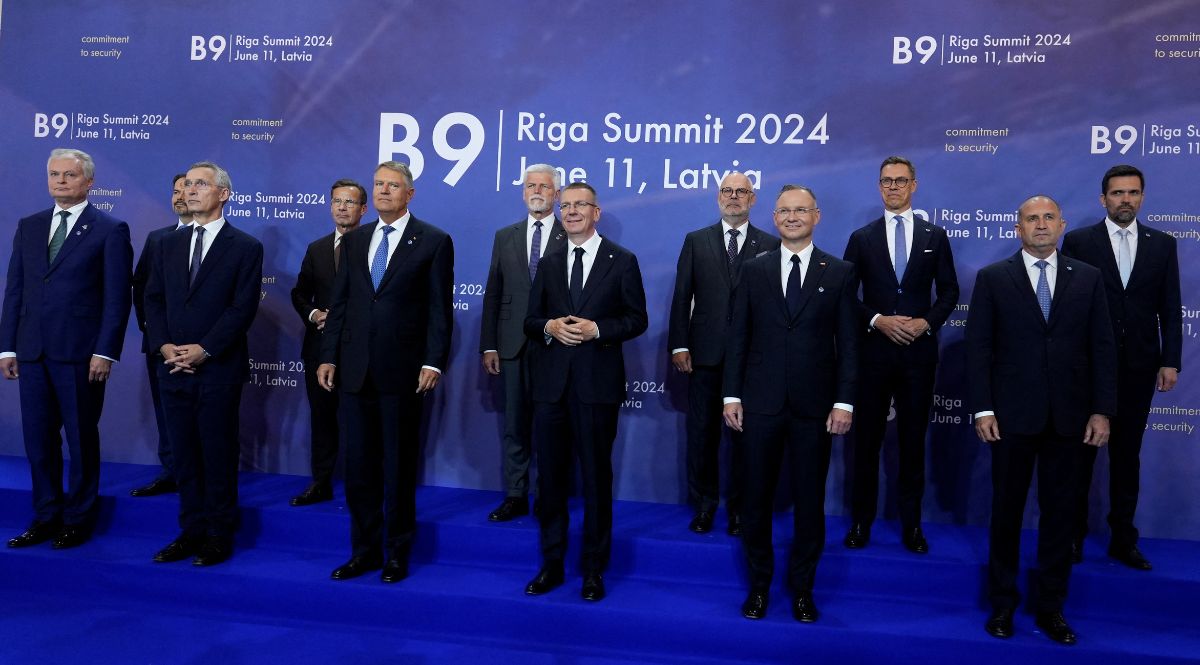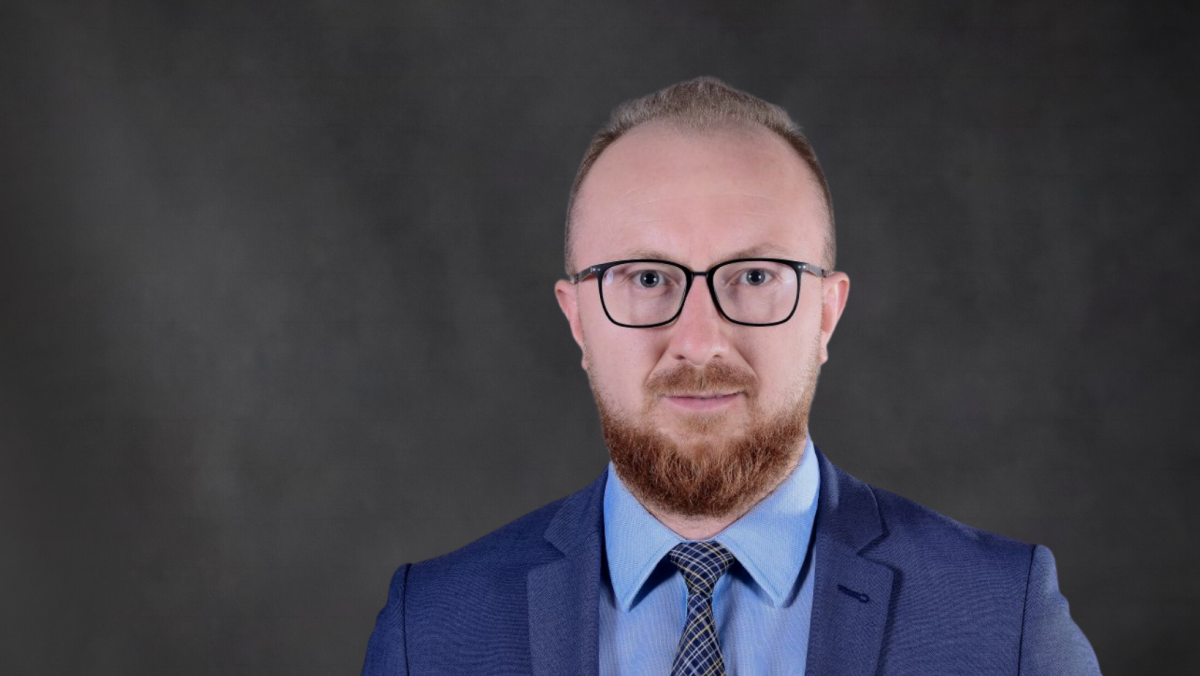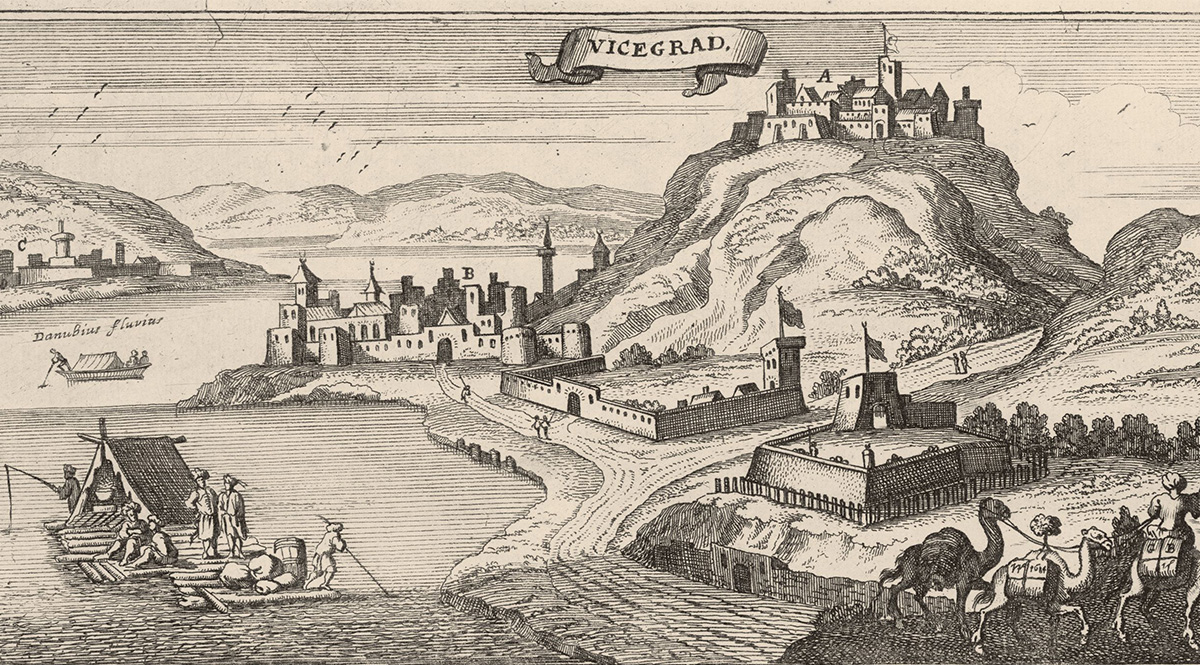Bucharest Nine Cooperation Strengthening NATO's Eastern Flank
The format for cooperation of nine Central European countries initiated in 2014 and officially established in the following year as the Bucharest Nine (B9) serves to strengthen NATO’s Eastern Flank by consulting each other and presenting expectations as common to the other allies. It was founded in response to the Russian annexation of Crimea and the Donbas war, and its activities intensified after the outbreak of the full-scale war in Ukraine in 2022. Hungary’s pro-Russian policy, however, remains a constraint on cooperation. It is in Poland’s interest to maintain the B9’s collective voice to strengthen the region’s security despite significant differences between the countries of the region.
 Ints Kalnins / Reuters / Forum
Ints Kalnins / Reuters / Forum
Objectives and Development of the B9
The origin of sustainable cooperation between the nine Central European countries was called by Bronisław Komorowski in Warsaw in July 2014 and began with consultations of the presidents of Bulgaria, Czechia, Estonia, Hungary, Latvia, Lithuania, Poland, Romania, and Slovakia. The aim was to strategically strengthen NATO’s Eastern Flank in the face of Russia’s hybrid aggression against Ukraine. They agreed on the need to increase allied forces in Central Europe and to jointly present this postulate to their partners at the NATO Newport Summit in September.
The coordination of positions is a core objective of the B9 meetings. The first official position in this format was initiated in November 2015 in Bucharest by presidents Andrzej Duda and Klaus Iohannis. The joint declaration adopted after the meeting served the group ahead of the 2016 NATO Summit in Warsaw, which was to decide on concrete ways to strengthen the Eastern Flank. It presented in solidarity the demand for a significant increase in the presence of allied forces in countries indicating such a need. Despite the hesitation of some of its Western partners, which had seen such a step as provoking Russia, the Alliance established multinational battlegroups in Poland, Estonia, Latvia, and Lithuania, and only a multinational training brigade in Romania (to its disappointment). Since the next B9 meeting, convened only three years later in 2018, the presidents have made the summits cyclical, albeit irregular—until the outbreak of the full-scale war in Ukraine, they met in 2019 and 2021, the latter with the virtual participation of U.S. President Joe Biden.
The B9 countries also use this platform to promote their contribution to collective security as well as solidarity within NATO. This is because their territories shield Western allies from the threat of direct attack by Russia. Therefore the B9 countries emphasise that investment in the Eastern Flank serves all partners. To strengthen their own capabilities, but also their allied credibility, most of them have started to dynamically increase funding and modernise their armies.
Although the B9 countries are united by their perception of NATO membership and bilateral cooperation with the U.S. as pillars of their security, a limitation from the beginning of their cooperation was their divergent assessment of Russia. The Baltic states, Poland, and Romania saw Russia as an immediate threat, Slovakia and Czechia—where Miloš Zeman is the most pro-Russian president in the region—were ambivalent, while Hungary and Bulgaria were sympathetic to Russia. In addition, the B9 countries were unable to overcome structural coordination problems and their own ambitions in bilateral cooperation with the U.S. Therefore, although they have also announced increasing cooperation between their arms industries, the interoperability of their militaries and the development of infrastructure for their transit across the region remains untapped potential.
B9 after Russia’s Invasion of Ukraine
The B9 responded to the full-scale war by convening consultations the day after it broke out and another round three months later. Despite differences in attitudes towards Russia, including Hungary’s still favourable stance, ahead of the 2022 NATO summits in March in Brussels and in June in Madrid, the B9 remained united and jointly pushed for further strengthening of the Eastern Flank. As a result of these summits, the Alliance expanded the existing battlegroups and established ones in Bulgaria, Romania, Slovakia, and Hungary, which did not have them before. Ahead of the 2023 NATO Summit in Vilnius, the B9 advocated broad Alliance assistance to Ukraine and expected to show a “new political track” to membership for this country, which was partially achieved. In contrast, prior to the 2024 NATO Summit in Washington, only the presidents of Latvia, Poland, and Romania had issued a joint statement as co-hosts of the B9 meeting. The Slovakian president skipped the gathering, as she was stepping down a few days later, and the Hungarian president did not attend nor disclosed the reason for it.
The more frequent participation of the B9 partners in the group’s meetings since the outbreak of the war serves to disseminate a Central European perspective. In 2022, the President of the European Commission Ursula von der Leyen attended. On another occasion, outside the summit, the B9 heads of state issued a joint declaration with the presidents of Montenegro and North Macedonia, the newest Balkan members of NATO. In 2023, the U.S. president attended the meeting, while in 2024, the president of Finland and the prime minister of Sweden, the newest states to join the Alliance, participated. Since the outbreak of the war, NATO Secretary General Jens Stoltenberg has also attended the meetings more frequently.
As a consequence of the war, the B9 countries increased the regularity of their summits, holding five meetings of presidents in just over two years, increasing their regularity to two a year compared to just four times over more than six years. Poland and Romania remained the most active, with their presidents hosting six B9 summits and co-hosting the other three. In addition, the previously irregular separate meetings of foreign ministers and B9 defence ministers became annual, starting with the growing Russian threat of aggression in autumn 2021.
At the same time, the B9 have not been united by strategic issues in Europe beyond the coordination of defence matters within NATO. For example, a letter by the Central European presidents of February 2022 calling on their partners to grant Ukraine candidate status for EU membership and start accession negotiations with it was not signed by the presidents of Romania or Hungary, although they supported this call shortly afterwards in individual actions.
Conclusions and Perspectives
The B9 has proved to be an effective platform for strengthening NATO’s Eastern Flank. This has been the demand of all countries in the region, including those initially reluctant to deploy allied troops on their own territory. The common demands prior to successive Alliance summits have made it easier to convince Western allies of this view. It also serves to indicate to their partners that such actions are investments in the security of the Alliance as a whole, with the B9 countries co-creators and not just beneficiaries.
The full-scale Russian invasion of Ukraine confirmed the usefulness of B9 cooperation and brought about an intensification of it greater than the increase in the regularity of NATO summits and has resulted in an increase in its importance as an interest group within the Alliance. Hungary’s pro-Russian and anti-Ukrainian policy has not had a significant impact on the functioning of the B9 because of its lack of interest in its partners’ efforts to strengthen the Alliance’s Eastern Flank and perception of this issue as irrelevant. At the same time, its policy forces most members to self-restraint in the B9 as it does not allow them to agree on a regional position towards the war that fully reflects their ambitions.
The impacts of changes of the heads of state on Central European decision-making in the B9 fits the limitations of the format. The absence of Hungarian President Tamás Sulyok from the platform’s most recent meeting may be a consequence of the Orbán government using the resignation of President Katalin Novák—who was posing internationally as a counterweight to the Orbán’s pro-Russian policies—to limit Hungary’s activity in the B9. In contrast, Slovak President Peter Pellegrini, who replaced the B9-involved Zuzana Čaputová in mid-2024, has a more ambivalent policy towards Russia. No such change is expected after the end of the terms of the presidents of the initiating states Romania and Poland, Iohannis and Duda, in late 2024 and mid-2025, respectively, as their successors are likely to similarly assess the utility of the platform.
The lack of options of the B9 states for more ambitious security cooperation, for example, in arms industries or even assistance to Ukraine, resulting from the divergent perceptions of Russia and their own defence priorities, should not be reason to limit cooperation in this format. Indeed, from the point of view of the majority of its constituent states, the B9 remains important to communicate Central Europe’s security needs both jointly and effectively despite these divergences. The exhaustion of this cooperation formula due to limitations would be particularly painful for Poland and Romania, which remain the most active members of the platform and have made it an important element of their security policy.




.jpg)
.jpg)
